Dry aged steak is awsome! So this weekend I thought I should honor this a little extra with a 3 course menu. Where all the dishes contain an element from the last dry ageing (10 kg rack of ribeye). Not all of the rack is turning into steak, but we will use some of the “waste” as well. When you dry-age beef, not only does the meat tenderize, but after a while the meat will also change taste and aroma profile. Some will say it smells a little nutty, cheesy, or even funky! A good collective term for all of these is Umami, or the fifth flavor (the rest of the “flavors” are what we know as sour, sweet, salty and bitter). Therefore, this menu will contain a good number of other elements with Umami flavors, and a number of components with a little fat to highlight these flavors. In this part we focus on the starter.
Menu:
Starter:
Beef Tartar of dry-aged rib eye and “waste” from the butchering. Served with “caviar” made on truffle beer, cured egg yolk. Beetroot mayonnaise, and grilled ciabatta
Main course:
Reverse seared côte de boeuf, corn bread made with reduced fat from the dry age (liquid gold), honey butter and chimichurri.
Dessert:
Akutaq with a twist
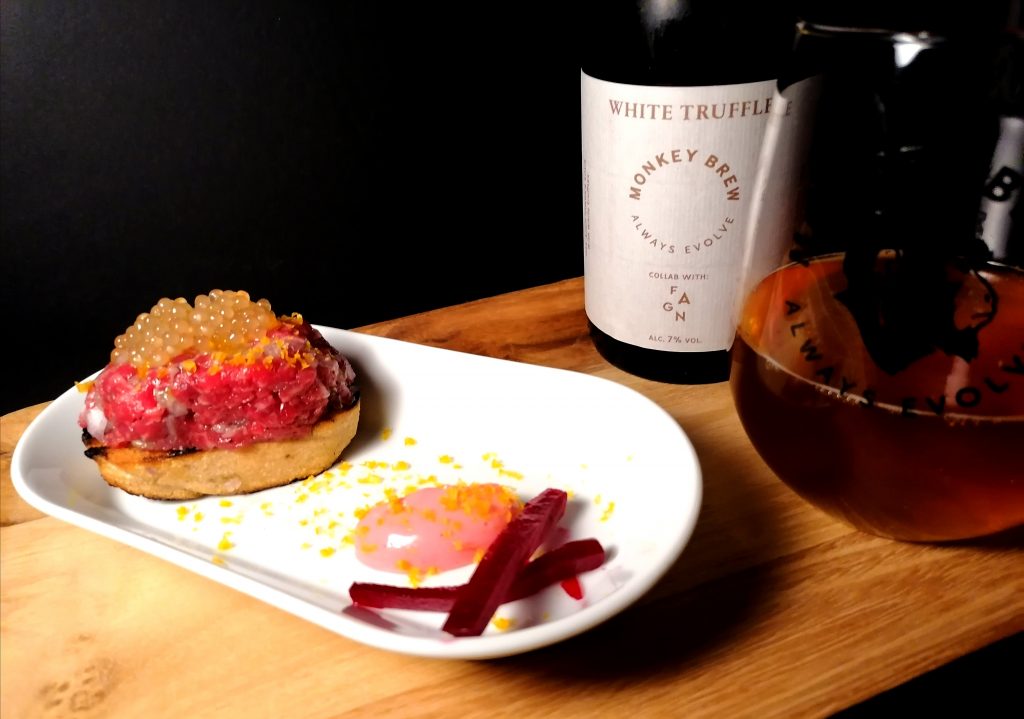
Starter
Beef Tartare, most people are familiar with this classic. It can be made in countless ways, often served with a raw egg yolk on top or next to it. Many recipes also have lots of ingredients in the mix itself, but since I use dry-aged meat for this, I want the taste of the meat to be prominent. I therefore make the tartare itself very simple, and with the following accessories/sides:
“Caviar” made from truffle beer and sago grain
cured/dried egg yolk
Beetroot mayonnaise
Roasted / grilled ciabatta
Beef Tartare:
- app. 200g Dry aged ribey, with fat cut away
- 2-3 filets of anchovies
- 2 shallots
- 1/2 ts cayenne pepper
- 1 Tbs olive oil
- Salt
- Fresh ground pepper
- A few drops of worcestershire sauce
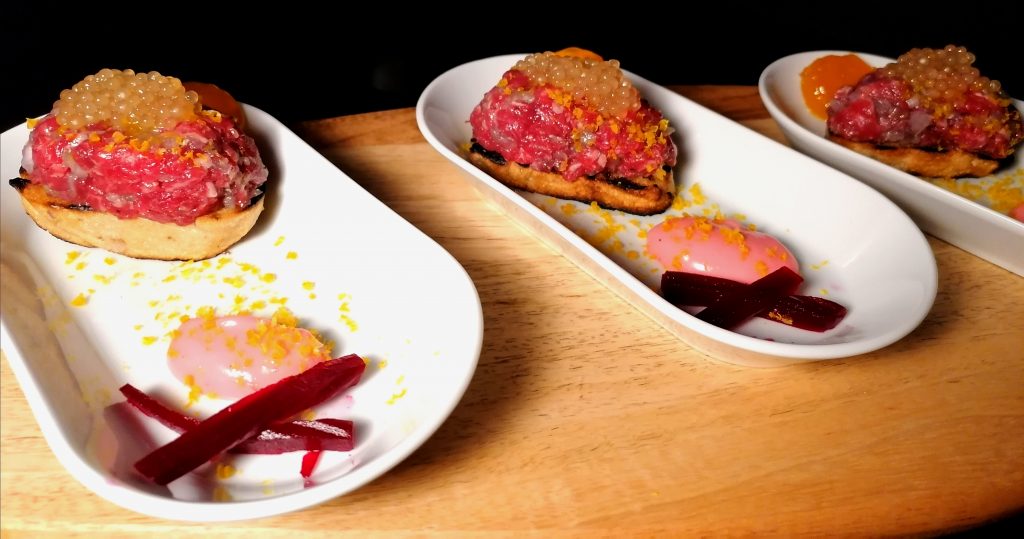
The meat
Start with the meat, you can leave it in the freezer for 15-20 minutes before you start slicing / chopping (it should not be frozen, just cooled down). Some use a grinder, but I prefer to cut up the meat with a knife. Then the meat retains its consistency and the result is much better in my eyes. While the meat is in the freezer, you can finely chop the onion and anchovies so that this is ready. Put these in the fridge. When the meat is sufficiently cold, take it out of the freezer, finely chop it and mix it with the other ingredients.
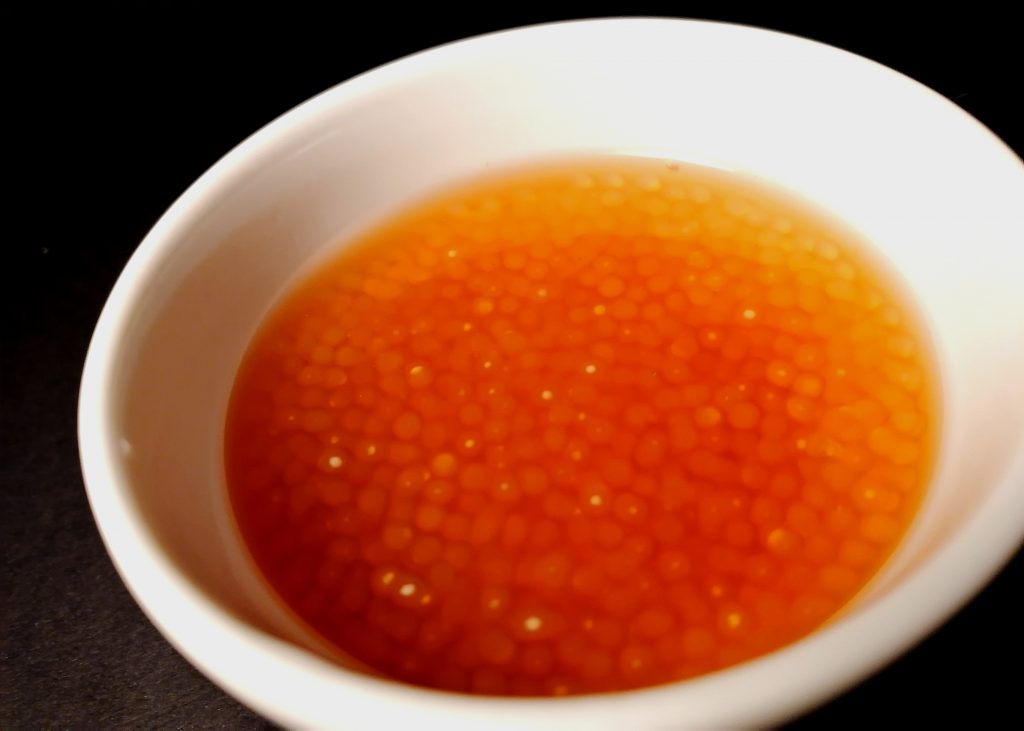
“Caviar” made with truffle beer and sago grains
- 3 Tbs sago grains
- Truffle beer or other sour beer
- water for boiling
- 1 ts Soy sace
Faux caviar
There are several ways to make “faux caviar”, but one of the easiest is this method: Boil sago grains in plenty of water until they are clear (sago grains are pure starch, so the water becomes very thick eventually, so use a good amount of water for this). Rinse them in cold water, place them in a bowl, pour over beer and soy sauce until the groats are covered. Leave the bowl in the fridge for 1-2 hours, and then you have “caviar” with a taste of sour beer, a little salt and umami from the soy sauce. Of course, you make this before you start with the tartar itself. If you leave the finished caviar in the freezer for 10-15 minutes, the caviar will be a little harder in consistency if you wish.
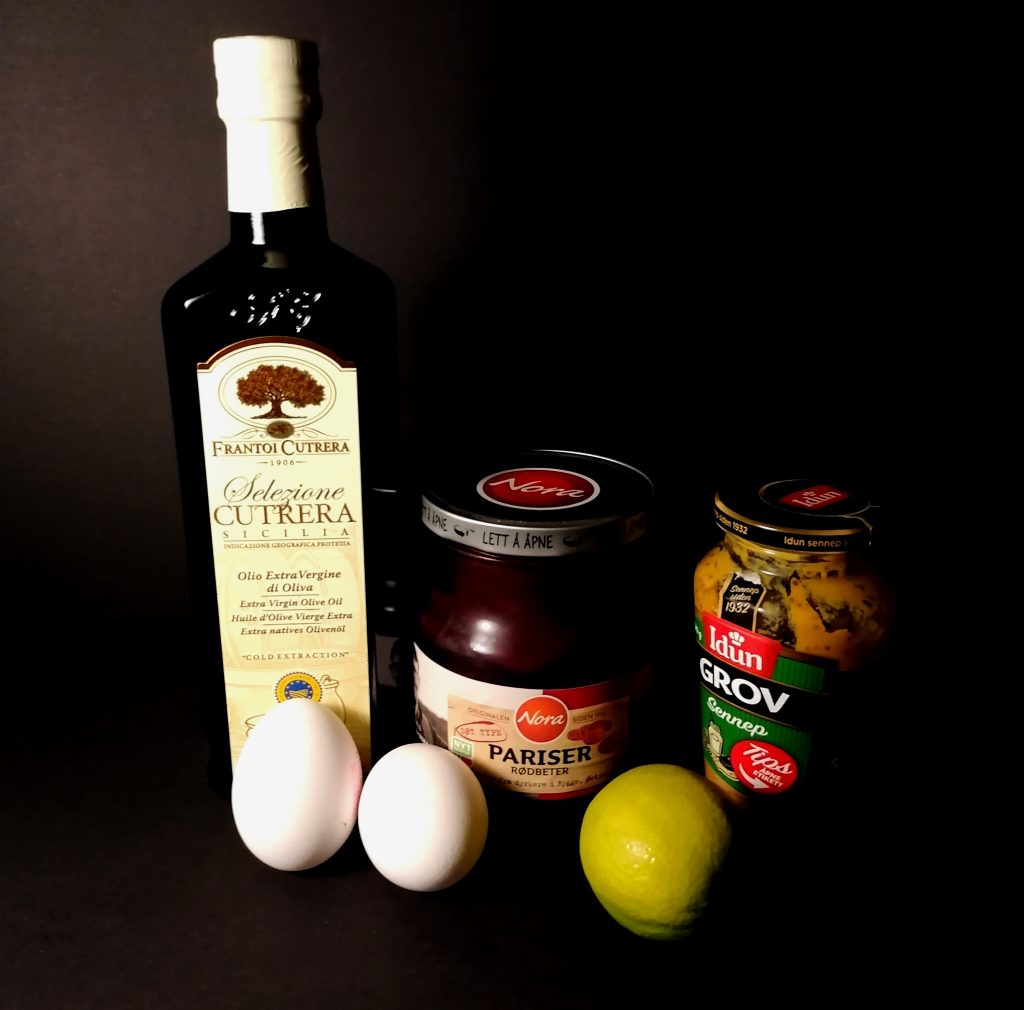
Beetroot mayonaise
- 5dl Rapeseed oil
- 2 egg yolks
- 1 Tbs Sennep (like dijon)
- 1/2 lime (juice)
- Fresh ground pepper
- Salt
- liquid from pickled beets
Beets
Lightly beat the egg yolks and mustard together. Continue to whip (or use a hand mixer) while slowly adding the oil to the desired consistency. Season with Lime, salt and pepper and a little beetroot juice.
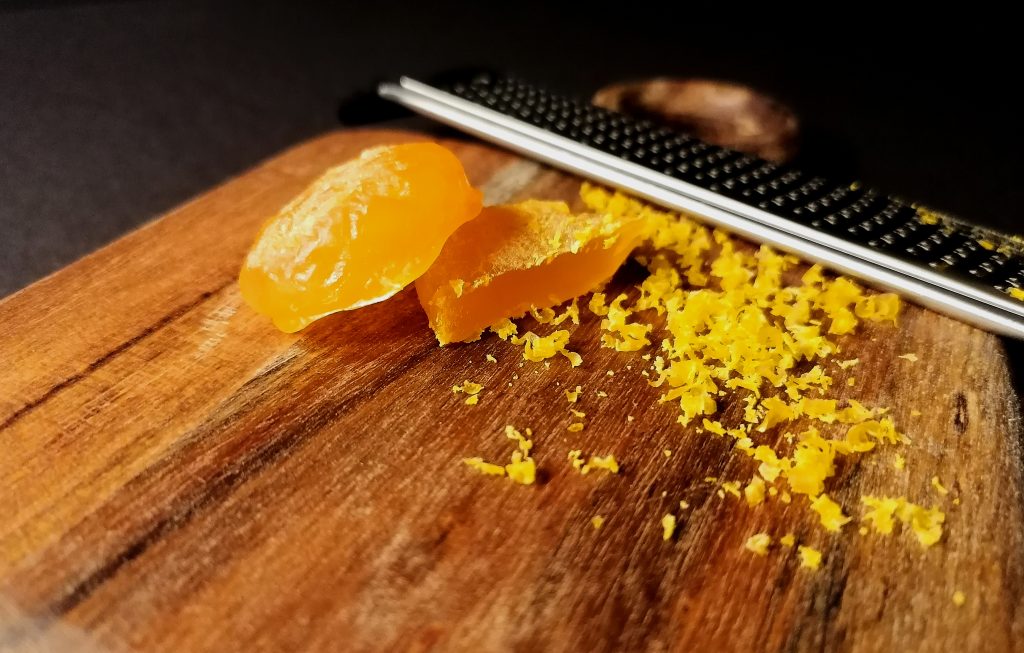
Cured egg yolks
- Egg yolks
- Sea salt
- Sugar
- Other prefered spices
Egg with a twist
As mentioned in the introduction, Tartare is often served with a raw egg yolk, but this time I serve it withcured egg yolk in 2 versions. One dried and one with still running core. One dried to grate over the dish, this gives even more delicious umami. And a running one for the fat part. It takes some time to makecured egg yolks, but in return its super good and can be used for a lot of strange things. It also has a decent shelf life.
Mix salt and sugar together (here you have to choose the ratio if you want a sweeter twist or a saltier / fat version). This time I went for about 70% / salt and 30% / sugar. Place a good layer of the mixture in the bottom of a tray or bowl. Separate the egg yolks and carefully place them on top of the salt mixture. Then carefully sprinkle salt / sugar over the eggs until they are completely covered. Leave them in the fridge for 24-48 hours. Take them out to rinse gently in cold water. Now you can serve these with a soft / flowing core, or dry them at 50 degrees C in the oven for 4-5 hours. Then they can be grated / chopped afterwards and used as spice.
Main course
So there you have the starter. Read Part 2 to see how to prepare the main course. And good luck!



0 Comments